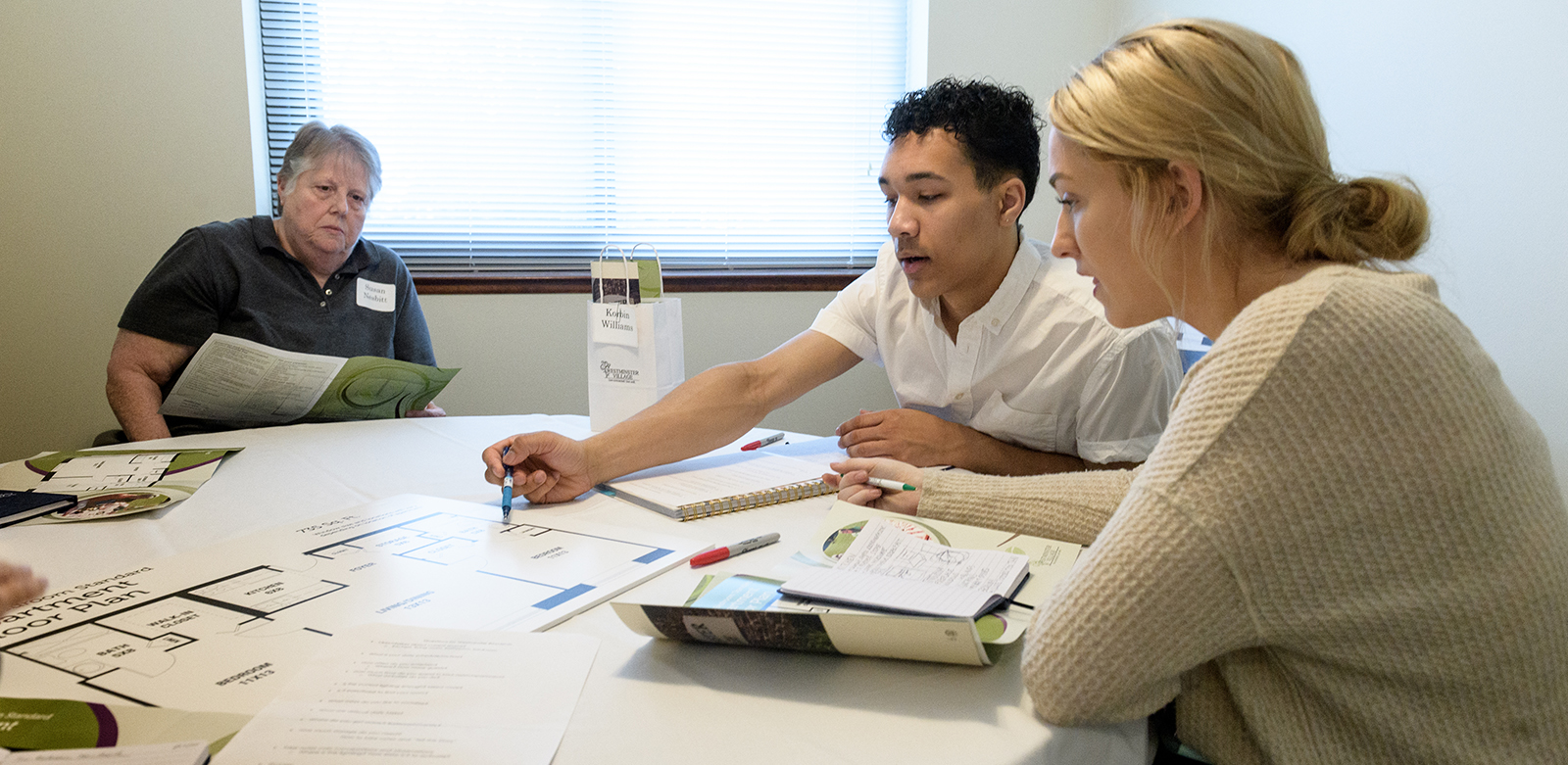
Design Challenge
Students Focus Design Efforts on Meeting Residents' Needs
By Anne Marie Yarbrough
THiNK Magazine
Interior design students at Purdue University have started a new project that will not only benefit our community today but for generations to come.
These sophomore students are in the early stages of designing four new apartments and a shared living space in Westminster Village, a senior living facility in West Lafayette.
“I hope to get a better perspective on designing for the elderly because I’ve never had this opportunity to reach out to people of that age and design for them,” said Korbin Williams, whose class is participating in the Purdue Design Challenge at Westminster Village. “All of our design projects have been, first, theoretical and also just not for that population. It’s real-world experience and also, with me being so young, it’s so nice to have this perspective and talk to older people. Now I’ll take this perspective with me for the rest of my life.”
Teams of student designers visited Westminster Village on Jan. 27 to meet residents and tour the facility. When the students spoke to residents about their housing needs, they received feedback about accessibility in the apartments. Residents also reported that it can be difficult to use a wheelchair in these spaces. With this feedback in mind, the students plan to design a more accessible floorplan for these new apartments.
“This stage is when you finally figured out the problems the space has been giving you,” said Sydney Kowal, one of Williams' teammates. “Now you can start building the aesthetic.”
All interior designers must empathize with clients’ needs in order to create suitable designs. Not only do they consider current residents for their design, but future generations as well. It can be difficult to find the perfect balance of functionality and aesthetic to please multiple generations, but Kowal is embracing the challenge.
“What’s cool about this project is that it’s residential and commercial because you’re designing for living, and you’re designing for living that’s not just one person living at home,” she said. “This is multiple people that are going to be living in these places and coming through.”
Williams also accepts the challenge of creating a multi-generational design. He wants the space to live up to residents’ standards now and in the future.
“I have to take what they say and personalize it,” he said, “but also generalize it where it’s standard but still valuable for everyone else.”